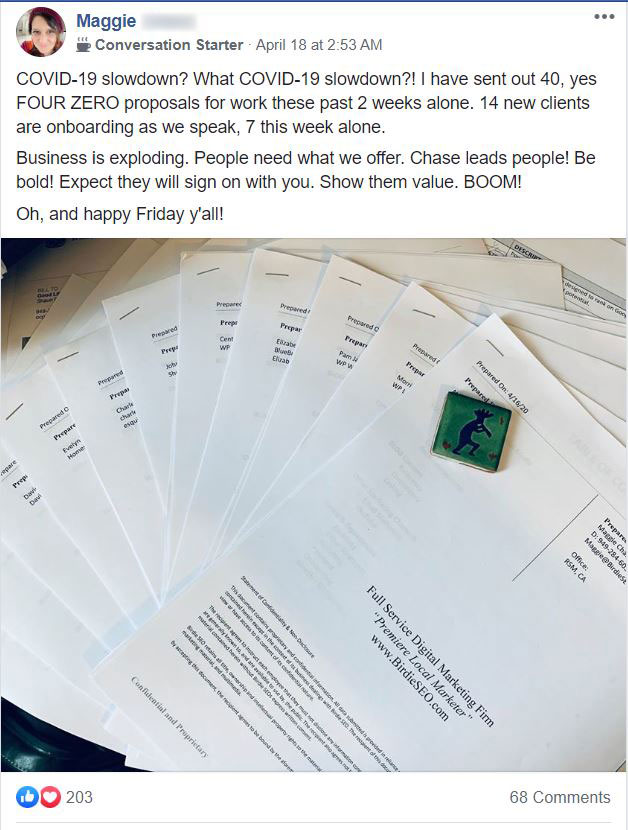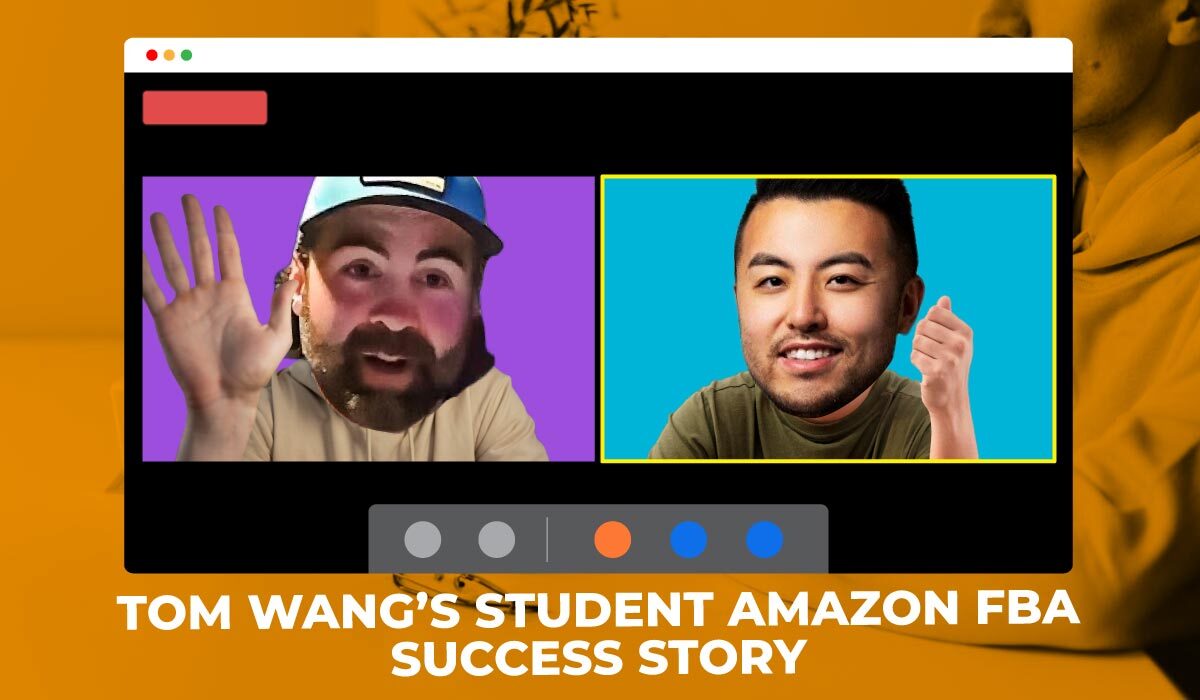
In a live session hosted by Tom Wang, Pat shared his inspiring story. He transitioned from a traditional sales manager at a technology consulting firm to an Amazon FBA success. Pat spoke to an audience of aspiring entrepreneurs. He detailed his strategic pivot: "I must hand this off (being a sales manager). I need to get a property management team and do that."" This decision allowed him to focus on Amazon. It boosts his entrepreneurial ventures while balancing family life with new fatherhood in 2020.
Tom Wang asks Pat on the call, "Are there any signs that you were going to be an entrepreneur? Were you the kid who sold lemonade stands and stuff like that?"
Pat answered that question, "Yes, and no. I'll put it that way."
Pat traced his entrepreneurial spark back to a childhood influenced by his best friend's ambitions to own casinos that ignited during a simple church activity. He reminisced, "I always looked up to his big brother... and Christina just said, I want to be an entrepreneur." Although unfamiliar with the term then, this early inspiration led him through various ventures, from a shaving brand in 2013 to temperature-sensitive beer glasses that taught him resilience through each challenge.
Now a beacon of e-commerce success, Pat's story resonated deeply with Tom Wang's audience. His journey emphasizes the power of persistence and strategic thinking in achieving one's dreams. Pat gives advice urging everyone to embrace the freedom to shape their destiny: "I want to do what I want, where I want, when I want, with who I want." His story motivates. It also shows the power of following your entrepreneurial spirit on platforms like Amazon FBA.
Pat's Power Play: Mastering Amazon FBA - Lessons from the Trenches
Pat's entrepreneurial journey is a shining example for all of us. Like many of us, Pat has launched multiple businesses, most of which didn't go as planned. But here lies the powerful lesson: success is about perseverance. Pat teaches us that the real victory isn't in flawless execution, but in the relentless pursuit of innovation.
Every failure is a stepping stone to greater knowledge and resilience. Remember, no business unfolds perfectly; deviations from the plan are not just common, they are expected. This insight is not merely a lesson, but a call to embrace the unpredictable nature of entrepreneurship. Let Pat's story inspire you to keep trying, to keep pushing the boundaries. Your next attempt could be the breakthrough you've been seeking.
Pat's second lesson comes from an illuminating encounter with a friend who recently ventured into creating an AI company. Despite meticulous planning, when his friend launched the product, it didn’t meet expectations, leading to considerable disappointment. However, from this experience, a critical insight emerged—a lesson in the value of early and iterative feedback.
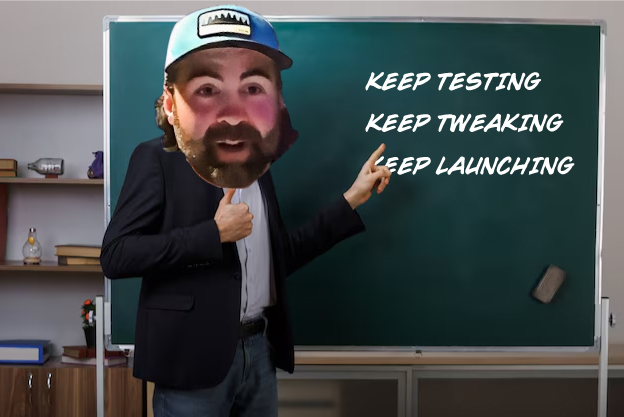
Pat's friend realized that his initial vision for the AI app, though grand, was hampered by launching too late. He learned that it's essential to release a product early, even if it feels unfinished or imperfect. The real-world feedback from these early stages is invaluable. It's about getting "into the mud," as Pat puts it. Waiting for the perfect moment means missing out on crucial learning opportunities that come from real customer interactions
Pat's journey is a powerful testament to the unpredictable world of product launches. He's had moments of absolute certainty, convinced that a product would be a smashing success, only to see it flop spectacularly. On the flip side, there were products he launched with minimal expectations—just putting them out there because, why not? And to everyone’s surprise, some of these turned into bestsellers!
Here’s the secret sauce: you can’t always predict the winners, but you can always keep playing the game. Throw your ideas into the market. Some will sink, and some will soar beyond your wildest dreams. It’s all about experimentation and adaptation. Kill off the losers quickly, double down on the winners, and keep innovating.
This isn’t just about products; it’s a fundamental principle of entrepreneurship. Keep testing, keep tweaking, and keep launching.
Mastering the Art of Product Hunting with Pat: The Insider's Guide
Tom inquisitively kicks off the conversation, "So, you were, you were like trying to find products for three months and then you just?
Pat, with a decisive tone, shares his initial strategy: "Like you go try and figure it out." He embarked on a learning spree, consuming all he could find on YouTube about Amazon selling and supplementing this with several courses.
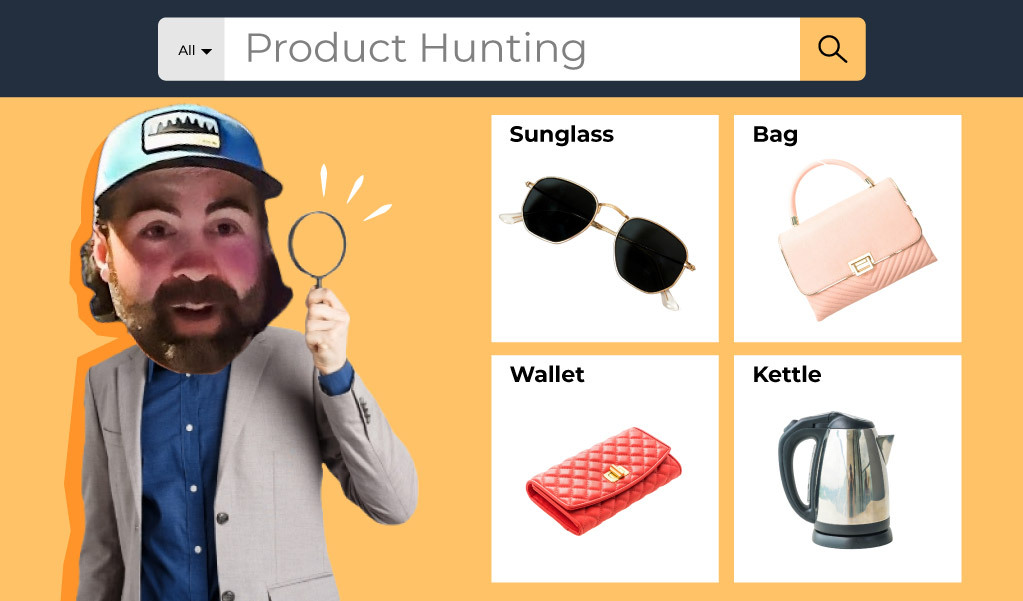
His philosophy was clear—speed is of the essence, but beware of the pitfalls of misleading information. Pat set specific criteria for his product choices—small, light, and durable. These characteristics meant the products would be cost-effective, resilient, and easy to ship. After much deliberation, Pat chose to dive into the world of cigars and cigar accessories, such as cutters, lighters, and ashtrays, leading him to top the Amazon ranks with his offerings.
1. Identifying Market Gaps: Leveraging Personal Insights
Next, Pat explains how he used his deep industry knowledge to carve out a niche. "What I did is I looked at the market," he explains. Pat noticed a significant gap in the mid-range price segment among cigar accessories. He found the missing middle market by analyzing his own purchases and the broader market on Amazon. Others overlooked this market, which was dominated by high-end or low-quality products.
Pat has a keen eye for detail. He understands consumer needs. This lets him position his products strategically. He can cater to an underserved segment.
2. Revolutionizing Product Presentation: The Power of Aesthetic Appeal
Pat then delves into how he revolutionized the presentation of his products. "I just show these products used in the right way with a little better marketing," he shares. He asked a friend for help. The friend was a wedding photographer. Pat arranged for professional photos. They showed his cigar accessories on a table. The table was mahogany. It was next to a whiskey glass. This smart presentation resonated well with his target audience. It boosted his product's appeal.
3. Staying Ahead of the Curve: The Front-Running Strategy
Pat's proactive approach didn't stop at marketing. He continually scoured Alibaba for new products, always on the lookout for fresh market entries labeled as "new." This vigilance let him predict market trends. He used it to introduce innovative products, like the four-in-one tools, before they became mainstream. Pat's strategy paid off. It let him establish a big lead in reviews over competitors. This further solidified his market presence and sales.
Navigating the Emotional Aftermath of Entrepreneurial Success: Insights from Pat's Journey
Tom delves into a topic. It's rarely discussed openly among entrepreneurs. It's the emotional rollercoaster after a successful business exit. "I'd love to talk a little bit about your post-exit life. I know a lot of people go through like a crash."
Pat opens up about the mental impact of selling a business. He likens it to "a hangover, to be honest. You go out with your friends, get drunk, and come home. You have a great night. But the next morning, you feel the pain," he says. He continues, revealing his struggle. "With entrepreneurship, once you sell the business and climb the mountaintop, there is a big crash."
Drawing on his own experience and that of others, Pat shows the little-discussed reality of post-exit blues. "I had a big crash. I know a lot of others who achieve a lot of success, and once they got the big payday, they had a big crash. "Nobody talks about this," Pat confesses. They emphasize the gap between public views and private struggles.
Pat sought guidance in this tough time. He turned to Chad, a life coach. Chad helped him navigate his emotions and find deep insights about himself.
As Pat reflects on his journey, he sees the ongoing challenge of managing emotions. He compares emotions to waves: "Emotions are like waves. Are there good waves or are there bad waves? Can you choose the waves? No, you have to ride all of them. Because if you don't have the bad ones, you can't have the good ones."
Pat's Blueprint for $300K: My Personal Playbook for Amazon FBA Success
Pat's remarkable journey from a modest initial investment of $3,000 to an astounding $300,000 in just one year epitomizes the power of strategic effort and smart scaling in Amazon FBA. When faced with the global slowdown during the pandemic, Pat seized the opportunity to transform his approach to online selling.
Pat learned early on that the secret to skyrocketing sales, "The key to boosting your sales isn't just hard work; it’s about smartly launching more products." He often says that reinvesting every earned penny back into the business was his formula for success.
Setting aggressive, clear-cut goals was central to Pat's strategy. He aimed to launch two products per month, a rigorous schedule that propelled his business forward rapidly. "Setting a goal and sticking to it made all the difference. It’s aggressive, but achievable," proving that even the most ambitious plans are achievable with the right approach,” explains a fellow entrepreneur inspired by Pat’s methods.
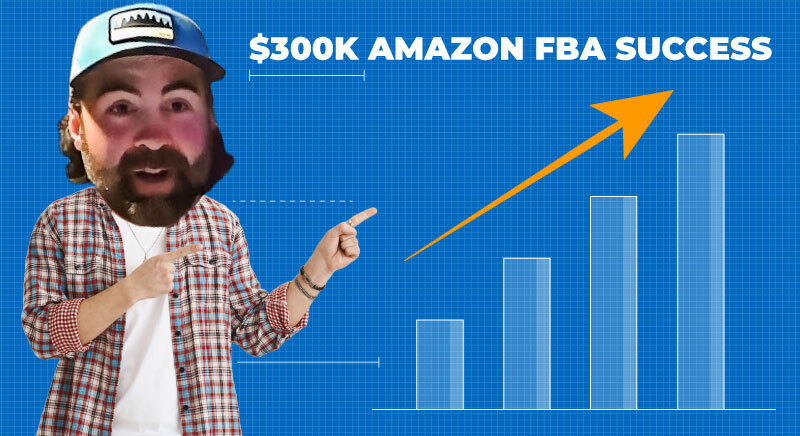
Pat’s tactic of breaking down overwhelming goals into manageable daily targets demystified the complex world of e-commerce for many. "If you can manage to make $100 in profit per day, that accumulates to $36,000 annually. Break it down, and suddenly, your goals seem much more achievable,". This methodical breakdown helped him not just meet, but exceed his targets.
Moreover, Pat emphasized the importance of understanding the economics of each product. "Always run the numbers backwards. If a product can generate $20 of daily profit, that’s around $7,000 to $8,000 a year. Know what you need and work backwards to achieve it."
Pat's story is not just a narrative of personal success but a blueprint for anyone looking to dive into or expand within the Amazon FBA marketplace. Pat’s example shows that ordinary people can achieve extraordinary results. It’s about the commitment to keep learning and adapting.
From Broke to Pro-athlete Money: How I Skyrocketed My Earnings from $25K to $52K a Month
After graduating from Michigan State University, I was trapped in a soul-crushing office job earning just $2,500 a month. Despite having explored numerous online ventures—from Amazon FBA to dropshipping and affiliate marketing—nothing clicked until I discovered the Lead Generation business model.
Stuck in a cubicle from 8 am to 5:30 pm, I earned a meager $2,200 monthly with minimal vacation time. This lifestyle was unsustainable. Local lead gen, however, revolutionized my life, granting me the freedom to enjoy my passions while earning passively.
From 2007 to 2012, my college life was filled with typical student experiences, but I ended up with a degree that felt irrelevant. By 2014, desperation led me to a lead generation coaching program, which bore fruit in just seven months. By 2017, my monthly earnings had soared to over $25,000, allowing me to indulge in a luxurious three-week European vacation.
While I dabbled in Amazon FBA and other online businesses, lead gen remained superior because of its passive nature. In lead generation, once you establish a digital property that ranks well, it can continuously generate leads without further effort, essentially earning money while you engage in other activities or relax. When considering Amazon FBA, it’s crucial to highlight the intense competition. You’re up against giants like Procter & Gamble and Philips. These companies have huge budgets, allowing them to buy inventory at much lower costs than most sellers can afford. According to Brand Builder University, Amazon had nearly two million active sellers in 2021, but Marketplace Pulse suggests the number is around six million. This high competition means small sellers are in danger.
By 2021, I was deeply involved in teaching others the ropes of lead generation, working closely with Dan Klein and contributing to the coaching community, ultimately shaping a life of freedom and financial independence.
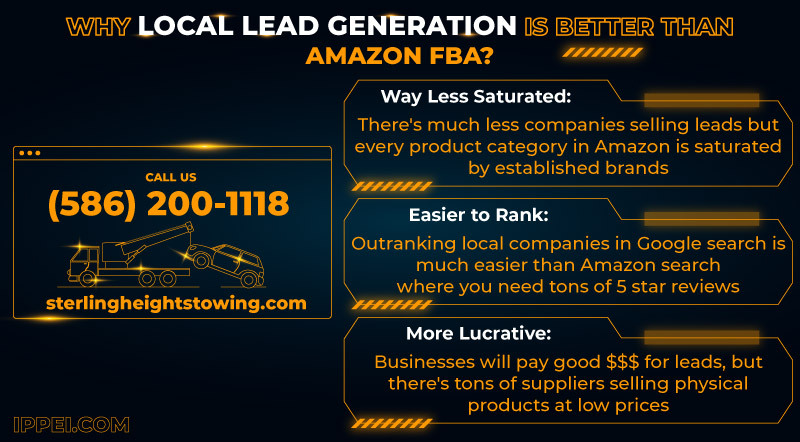
Let me paint you a picture: since 2015, a single tree service website I developed has been a gold mine, pulling in $2,000 monthly. Here’s why my client cheers every time they pay the invoice: that site drives over 200 calls each month. It took just 15 hours to set up and optimize for search rankings. Fast forward seven years, and that initial investment has generated a whopping $168,000. Breaking it down, that’s an astonishing $11,200 for every hour I spent on the project—and that hourly rate just keeps soaring as time goes on.
For someone who did both, I can say that local lead gen biz a better deal!



